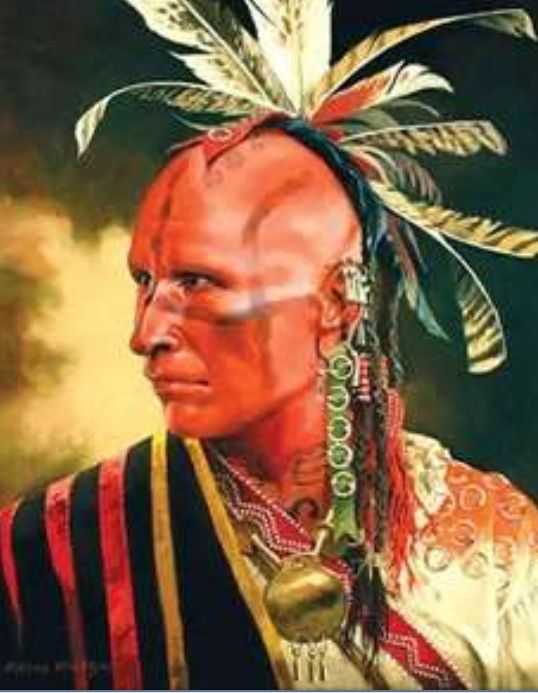
At the time of first contact with Europeans, the Ottawa (Odawa in Canada) were living on Manitoulin Island. The Ottawa homeland for at least three centuries prior to European contact was the Michigan Lower Peninsula.
The tribes of the Three Fires Confederacy—Ojibwa, Ottawa, Potawatomi—were once a single people living in the east according to oral tradition. At the time of separation, the tribes were living in the area of the Straits of Mackinac. The Potawatomi moved south into present-day Michigan. It is estimated that the three tribes may have separated as late as 1550.
The Indian nations of the Three Fires Confederacy spoke Central Algonquian languages which are closely related to Miami, Illinois, Shawnee, Sauk, Fox, Kickapoo, Menominee, Cree, Montegnais, and Naskapi.
Farming
Among the Algonquian-speaking people of the western Great Lakes area, farming was of secondary economic importance (hunting and gathering were of greater importance) and contributed less than half of their food. As with the other Indian farmers of the Northeast, they raised corn, beans, tobacco, and squash. The reduced importance of agriculture was due largely to climatic conditions. Throughout much of the region, the 140-day growing season made agriculture a risky endeavor. A later spring or an early fall meant that crop failures were a constant possibility. There are, however, microclimates along the Great Lakes which offer more suitable conditions for agriculture and offer a slightly longer growing period.
Among the Ottawa, women would remain in the summer village to tend the crops while the men went off to hunt. The primary crops were corn, beans, and squash.
Tobacco
Among the tribes of the western portion of the Northeastern Woodlands, tobacco was an important ceremonial and trade plant. Tobacco smoking is a symbolic way of enhancing the communication between individuals, between groups, and between the people and the supernatural.
Among all of the tribes of Great Lakes area, tobacco is used for all important activities. This includes sprinkling of tobacco on the water as an offering to the underwater spirits just before getting into a canoe; offering a pinch of tobacco to the earth where other ceremonial plants are gathered; providing tobacco to someone when a special request is made.
The oldest form of tobacco which was cultivated and used in this culture area was Nicotaina rustica. This tobacco, often described as “strong-tasting”, was cultivated in small patches and was used in religious ceremonies. According to archaeologist Mark Wagner, in a chapter in Stone Tool Traditions in the Contact Era:
“Many Native American groups reserved N. rustica for use in religious and other ceremonies while using the commercially obtained N. tabacum for recreational smoking.”
Nicotaina tabacum was originally cultivated in Brazil and was introduced to North America by the Europeans who raised it as a commercial crop.
Hunting
Hunting was an important economic activity and hunting territories were allocated to specific families. While these families did not own the land in the European sense of land ownership, they did have the exclusive hunting rights for a specific area. Game taken by a hunter was generally shared freely among all in the camp or village, including strangers. The purpose of hunting was to feed the people, not just the hunter and the hunter’s immediate family.
Among the western Algonquians, deer and moose were important food sources. Deer were sometimes hunted by a group of hunters using dogs to drive the deer into a V formed by chopped down trees. Sometimes deer were hunted at night when they came to the stream or lake for water. In hunting at night a jacklight was used: this was a torch on a platform in the front of a canoe. The light would cause the deer to pause, momentarily attracted to the light.
Fishing
Historically, the archaeological record shows that Indian people in the Great Lakes area used a wide variety of different kinds of fish. In their entry on the Ottawa in the Handbook of North American Indians, Johanna Feest and Christian Feest report:
“Fishing was of decisive importance for the Ottawas living along the lake shores. Chequamegon Bay and the Straits of Mackinac were chosen as village sites for the abundance and variety of fish available, which were caught in nets by the Ottawas.”
Fishing was a year-round occupation. Fish were taken with fishhooks, nets, spears, traps, lures, and bait. One method of spearing fish involved fishing at night with a torch.
Writing about the Chippewa and Ottawa, historian Robert Doherty, in his book Disputed Waters: Native Americans and the Great Lakes Fishery, reports:
“During the spring and fall, when the fish crowded into shallow water, the Indians caught them by the thousands.”
During this time, when there plenty of fish to catch, the bands lived in fairly large groups on the shores of the Great Lakes.
Many tribes, such as the Chippewa and Ottawa, used gill nets for fishing. According to historian Robert Doherty:
“Native women worked basswood, nettle, and other natural fibers into nets, linking the strands into mesh with neatly tied sheet bends. Men fashioned cedar floats and cut grooves in small stones to be used as sinkers.”
On the Great Lakes, the fishermen would take their canoes far offshore and set their nets in deepwater.
On the rivers, the Indians would often fish from a canoe using a dip net. Two men working from a canoe could harvest several hundred pounds of fish in just a few hours. The man in the bow would handle the net while the man in the stern would guide the boat in a backward drift downstream.
During the winter, Indians would spear trout and sturgeon through the ice. They would first cut a hole in the ice and then build a small hut so that the fisherman would be out of the light, hidden from the fish. The fisherman would drop a small lure into the water and use it to decoy the curious fish into spear range. In some instances, they would use spears up to forty feet in length to reach into the depths of the water.
Gathering
One of the important foods in the Great Lakes area was maple sugar. This was more than something good to eat: maple sugar was a symbol of good relations and harmony between the people, the natural world, and the unseen supernatural.
In many areas, the maple sap would become available before the fish in the spring so the people would begin to gather at the sugar bush groves before moving on to their fishing areas. Among the Chippewa and Ottawa in Michigan, several related families would camp together while harvesting the sap.
The making of the maple sugar began in late March or early April with the arrival of the first crow. The entire village would then move to the maple area where they would tap the trees, boil the sap down, and separate it into syrup, sugar, and cakes. The maple sap was collected in birch-bark containers which were made by folding the ends of a rectangular piece of bark and tying it with willow. A gash would be cut in the tree and a cedar chip driven in under the gash. The basket would be placed on the ground under the chip to catch the sap as it dripped. In a good season, a family would prepare 400-500 pounds of sugar.
The maple sugar was used in preparing fruits, wild rice, vegetables, and fish. In the summer, a cool drink was made by dissolving the maple sugar in water. Finally, the maple sugar was also used to make confections which were enjoyed by the children (and probably by the adults as well).
Berries were another important food which was gathered by the tribes in this area. These included strawberries, raspberries, blueberries, chokecherries, and cranberries. In addition to eating the berries fresh, the people also dried them so that they could be used throughout the year.
Land Ownership
Among the Indians of the Great Lakes area, the concept of ownership centered not on the land itself, as among the Europeans, but on the resources. Historian Robert Doherty reports:
“Among the Indians, ownership was vested in a group, which owned the harvest rights through traditional use. Ownership ceased when the harvest rights were not used, and although the Ottawa and Chippewa bands had a well-developed sense of territoriality, the land itself was not owned.”
Resources were allocated by the bands rather than being owned by individuals. The band, not the tribe, apportioned these resources to the families within the band.
Villages and Housing
The Ottowa lived in palisaded villages similar to those used by the Huron. Villages were located near river banks or lake shores. Since the women did the farming, they formed the core of the year-round residents. The men would travel as far as 75-100 miles in search of game.
There were two kinds of houses. There was a permanent house—o-na-ge-ho-g-ameg—which was constructed with an ironwood post framework and horizontal elmwood pieces. These houses were covered with birch bark. The permanent houses were 10-20 feet wide and 20-40 feet long. The larger houses were occupied by several families and would have a fireplace at either end.
The wigwam—wig-wa-si-ga-mig—which was a round or slightly rectangular structure made with a bent pole frame and covered with birch bark or woven mats. These dome-shaped structures were about 12 feet long and 10 feet wide. Some would have two doors.
The birch bark for the wigwams were made in sewn strips about 36 inches wide and 12-18 feet in length. The raw edges were bound with cedar and sewn with basswood bark to prevent breaking and tearing. The strips were then rolled for transport. It would take 10-12 sheets to cover a wigwam.
Dress and Ornamentation
Both men and women were tattooed. Women would have parallel lines on the cheeks and chins while the men would have more elaborate designs. Some Ottawa men had designs of snakes, lizards, and geometrical figures which covered most of the body.
Johanna Feest and Christian Feest report:
“Ottawa men characteristically wore their hair short and upright in front; they pierced both their nasal septum and their earlobes, ornamenting them with stone, copper, and shell ornaments.”
Family
The Algonquian-speaking groups in the western portion of the Northeastern Woodlands were patrilineal, that is, they emphasized descent through the male line. People were members of their father’s clan. According to historian Richard White, in his book The Middle Ground: Indians, Empires, and Republics in the Great Lakes Region, 1650-1815:
“At birth, every Algonquian, by virtue of his or her descent, clearly belonged to a patrilineage and a patrilineal clan, but in daily life, that clan or lineage was not effectively composed simply of those genealogically assigned to it.”
Among most of the Algonquian-speaking tribes, a woman’s status or social position was not dependent on her husband.
An Ottawa infant was placed in the cradleboard shortly after birth and the cradleboard was used for the child until it was weaned, often at about three years of age.
Government
Among the Algonquian-speaking people of the area, chiefs could generally command no one. The power of the chiefs was based on persuasion rather than coercion. During a war expedition, however, war chiefs could command the warriors.
Leadership power, according to the Algonquian world-view, stemmed from the manitous or spirits and was given to individuals or to clan ancestors. The power given to the clan was symbolized in objects in the clan bundle which related to the original vision from the manitous. The clan chief was responsible for carrying out the ceremonies which involved the clan bundle. Village chiefs were often the heads of the chiefly clans, but this did not mean that leadership was hereditary. When the leading candidate from the chiefly clan was felt to be unsuitable for village leadership, the village council would meet and select a village chief.
War
Among the Algonquian people of the western Great Lakes area, warfare consisted of raids carried out by relatively small raiding parties. There were two primary reasons for these raids: (1) to avenge a slain member of the tribe, and (2) to gain personal war honors. Warfare tended to be seasonal (war parties did not usually go out during the late fall, winter, and early spring as these were prime hunting times) and carried out at a leisurely pace. The battles were usually very short, usually only a few minutes.
The primary military strategy among the tribes in the Great Lakes area was that of surprise. War parties sought to come upon the enemy unawares. Ambushes and decoys were often a part of this stratagem.
Ottawa warriors would go into battle naked carrying a large (about 4 feet in diameter) shield made of rawhide.
It was not uncommon for women to become warriors. Women became warriors because of visions which they had received. In some instances, women also functioned as war leaders.
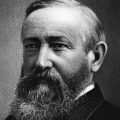
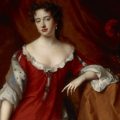
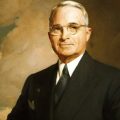
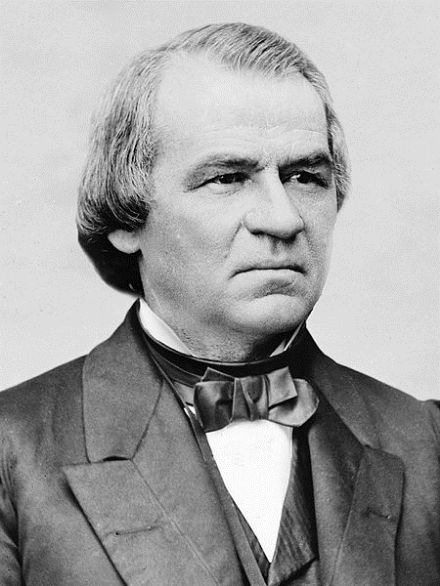
Leave a Reply